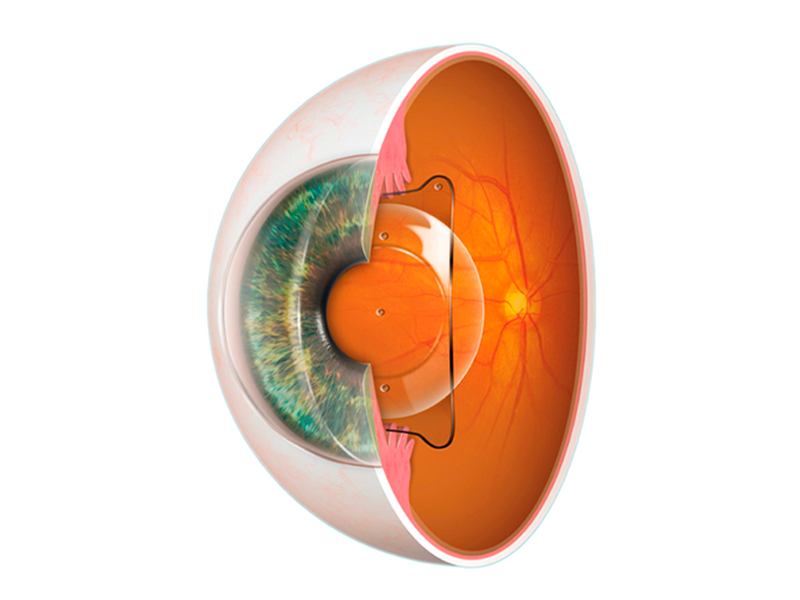Peripheral defocus lenses: an option to slow the progression of myopia
14/10/2025

19/11/2019
In my fourteen plus years of experience with this lens, I’ve seen that they provide patients with top quality vision.
—What kind of patients are EVO ICLs suitable for?
For all patients over the age of 21 that have stable myopia or hipermetropia and a range of dioptres within the scope of correction of these lenses, which is normally patients with up to eighteen dioptres, astigmatism of up to six dioptres and hypermetropia up to six or eight dioptres.
—What can a patient expect from this surgery?
From a surgical point of view, it’s a short and straightforward operation. Generally speaking, we do one eye and after a week we operate on the second eye. It is performed with local anaesthesia and the eyesight is restored practically immediately. In the first week, the patient already reaches their greatest visual acuity. From an ophthalmic point of view, it’s a reversible operation as the lens can be removed at any time.
—As an eye surgeon specialising in this type of surgery, why do you choose ICLs for your patients?
In my fourteen plus years of experience with this lens, I’ve seen that they provide patients with top quality vision. It’s an additive procedure, whereby we are adding a lens to the inside of the eyeball and we are not removing any lens or peeling off any kind of corneal tissue. And this is really important for patients with a high degree of correction. We do not indicate refractive corneal surgery like the laser for patients with more than seven or eight dioptres. Therefore, our experience with this kind of patient is very good.
—How does it change the life of your patients?
These patients depended on glasses with a high prescription in them, and being able to see the world with the same or even better quality than with their old glasses is the best thing most of them have ever done.
—How long have they been on the market and how long do they last?
These lenses have been on the market for approximately 22 years, so we have already tried and tested the material and the results are excellent. In theory, the material lasts forever but evidently, we grow old and we will get cataracts at some point. Patients with a high degree of myopia, who comprise the majority of patients who get this lens, usually get cataracts earlier, around the age of fifty or sixty. When this type of patient starts to develop a cataract, the lens has to be removed, the cataract operated on and the lens implanted once again.
—What benefits does it have compared to other procedures that treat myopia, hypermetropia and astigmatism surgically?
The greatest benefit is the reversibility. It’s a lens that can be removed. Other procedures that mould the cornea with a laser are not reversible. With our 25 plus years of experience here in the clinic performing refractive surgery operations, you have to select each patient very well, indicate them for treatment and advise them which surgical technique is best for each individual. The most important thing is appropriate patient selection, choosing who can and cannot be operated on and which technique should be used.
—Even though they’ve been on the market for 22 years, most patients are unaware of ICLs, how do you explain this technique and its advantages to the patient?
Many patients know that there are intraocular lenses for correcting myopia, but generally speaking, they fear having a foreign body inserted into their eye. As a surgeon, I can say that this surgery has the same level of difficulty as procedures that people consider to be more straightforward, like laser surgery, and I explain to them that it is not going to hurt at all, that their vision will be restored very quickly and that they are at an advantage as it’s reversible. In cases of low myopia, hypermetropia and astigmatism, corneal surgery is still our techniques of choice, but the lens implant also permits us to correct refractive defects and with a high quality of vision.
Almost all wearers of glasses and contact lenses consider reducing their prescription with refractive techniques at some point. In this chapter we explain all the options and help you know when it is worth having surgery, who is a good candidate and why it is so important to choose where to go.